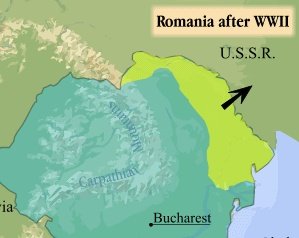🇷🇴 Romanian Fascist Architecture and Sculpture
Similar to their Italian counterparts, the constructions had to be imposing and giving the royalty a greater significance
The architecture and sculpture were simple, elegant and filled with national symbolism
Thread ↓
Similar to their Italian counterparts, the constructions had to be imposing and giving the royalty a greater significance
The architecture and sculpture were simple, elegant and filled with national symbolism
Thread ↓

The Transnistria Exhibition pavilion was built in Bucharest in 1941
The exhibition honored Romania's conquest at the Eastern Front
The exhibition honored Romania's conquest at the Eastern Front

On one of the panels of the Transnistria exhibition pavilion, we see a depiction of the Romanian ruler Duca-Voda, Prince of Moldova (several times between 1665 and 1684), of Wallachia (1674-1678) and Hatman of Ottoman Ukraine (1681-1683) 

The Ministry of National Propaganda, the building is a very original one, based on strict Western modernism and inspired by mansions in the south of Romania
The columns from the entrance remind of neo-Romanian architecture and traditionalism
The columns from the entrance remind of neo-Romanian architecture and traditionalism

In 1935 an exposition in honor of Bucharest was organized which lasted for a month and showcased examples of Romanian fascist architecture like the Pavilion of the Royalty 

The Faculty of Law, built in 1935 in Bucharest in the Art Deco style features some interesting details 

On the facade statues of important historical personalities were depicted like Justinian, the Eastern Roman Emperor who ordered the codification of Roman Law 

In the interior of the mausoleum, we find some beautiful wall paintings, such as this one, which depicts Archangel Michael in a heavenly setting
He stands protectively in front of Romanian soldiers, holding a cross that at the bottom transforms into a sword
He stands protectively in front of Romanian soldiers, holding a cross that at the bottom transforms into a sword

The Tower of the Liberation of Basarabia, erected in 1942 in Ghidighici, near Chișinău
This monument was designed by the architect Octav Doicescu on the occasion of the liberation of Basarabia from the Soviet occupation
This monument was designed by the architect Octav Doicescu on the occasion of the liberation of Basarabia from the Soviet occupation

The Bucharest-Băneasa Royal Railway Station
The building was monumental with a 70 m wide platform and associated with the monarchy and specially Carol II
The royal symbols that were carved into the building were later removed by the communist regime
The building was monumental with a 70 m wide platform and associated with the monarchy and specially Carol II
The royal symbols that were carved into the building were later removed by the communist regime

• • •
Missing some Tweet in this thread? You can try to
force a refresh































